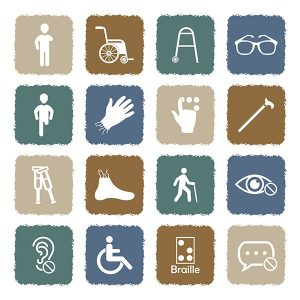We have a guest blogger for this edition of Commissioner’s Corner. Savi Swick is a Supervisory Research Analyst in the U.S. Department of Labor’s Office of Disability Employment Policy.

During National Disability Employment Awareness Month each October, there is much to celebrate and reflect upon. It’s a time to reaffirm our commitment to increasing access and opportunity for workers with disabilities and honor the value and talent they add to America’s workforce and economy. And this year’s celebration is doubly essential, marking both 75 years of this observance and helping bring to a close the yearlong commemoration of the 30th anniversary of the Americans with Disabilities Act.
For researchers like me, it’s also an opportunity to celebrate the importance of data. As a research analyst in the U.S. Department of Labor’s Office of Disability Employment Policy, my thoughts turn to how credible, consistent data are key to delivering on the promise of disability inclusion inherent in the Americans with Disabilities Act, today and into the future.
That’s why we partnered with BLS in 2008 to add six disability-related questions to the monthly Current Population Survey, the official source for estimates on U.S. labor force participation, employment, and unemployment. As a result, monthly data on the employment status of people with disabilities were released for the first time in January 2009—and have been every month since.
In addition, we collaborated with BLS and the U.S. Department of Labor’s Chief Evaluation Office to gather additional data through supplements to the Current Population Survey in May 2012 and July 2019. Through these supplements, we gleaned critical information on barriers to employment, prior work experience, career and financial assistance, requested changes to the workplace, and other related topics from respondents with disabilities.
Today, these data provide reliable, accurate information to a range of stakeholders on a topic of critical importance to America’s families and communities. Most significantly, they help facilitate evidence-based policymaking at the national, state, and local levels.
What exactly is evidence-based policymaking? It’s the simple notion that public policy should be informed by established, objective evidence. While that may seem obvious in principle, the reality is that, absent such evidence, policymakers often make decisions based on assumptions derived from anecdotal evidence, which can be subjective. This can lead to inefficient use of public resources and poor outcomes.
That’s because—and this is what often fascinates data geeks like me—things are not always as they seem. Often, data reveal that what we assume to be true, in fact, may not be true, or at least not the whole truth. This is especially the case for complex, multifaceted issues, such as the employment of people with disabilities.
Increasing access and opportunity requires us to first understand what the barriers to access are and where the opportunities exist. It also requires us to anticipate changes and identify intersections. For example, data from May 2012 and July 2019 supplements pinpointed a lack of transportation as an ongoing barrier to work for many people with disabilities. As a result, the Office of Disability Employment Policy, in partnership with the U.S. Department of Transportation and the U.S. Access Board, is engaging disability advocates and private industry to promote more accessible transportation options—especially inclusive autonomous vehicles that can help people with disabilities get to work.
Of course, the employment landscape has shifted this year due to the COVID-19 pandemic. The changes it has brought to our workforce and economy compel us to consider what questions we need to ask now to ensure we can meet the needs of workers with disabilities in the years ahead. Already, BLS data are helping us detect trends, especially in the context of different occupations.
In any climate—whether the historically robust economy before the pandemic or one recovering in the wake of unprecedented challenges—quality data helps us serve America’s 15 million working-age people with disabilities better. They also help us deliver on the spirit of the bipartisan 2018 Foundations for Evidence-Based Policymaking Act. Going forward, with continued support from BLS, the Chief Evaluation Office, and Department of Labor’s Chief Data Officer, we will continue to develop and implement data-driven policies and programs that meet the needs of America’s workers with disabilities, every month of every year.
 United States Department of Labor
United States Department of Labor